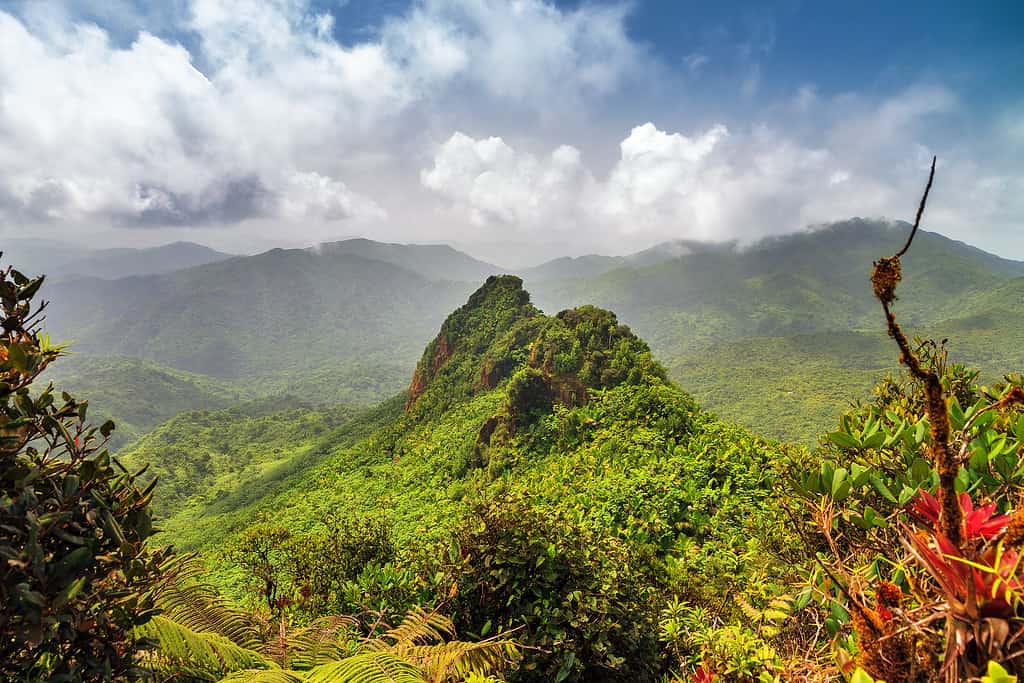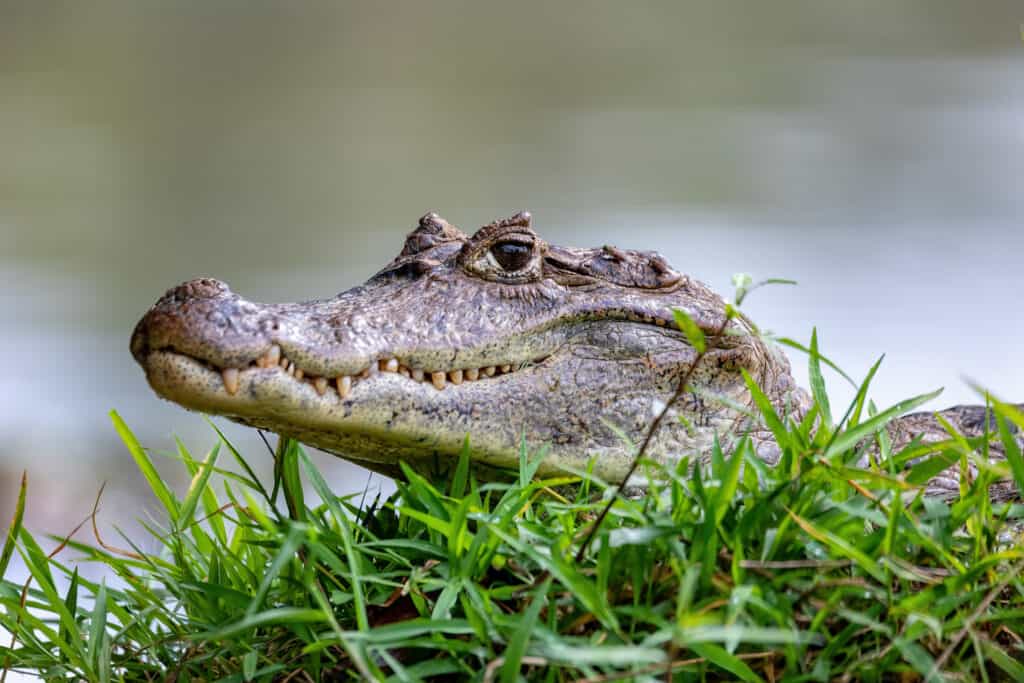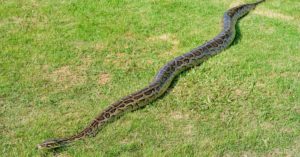Puerto Rico is a small island in the Caribbean Sea. At 5,325 square miles in total area, it is roughly the same size as Connecticut. The island features many fascinating animals, including one crocodilian of the order Crocodilia. This order contains alligators, crocodiles, and caimans. This article explores whether alligators, crocodiles, or caimans live in Puerto Rico. Additionally, it explores the differences between these crocodilians.
Puerto Rico Location and Climate

El Yunque National Forest is one of the rainiest places, with an average of 120 inches of rain per year.
©dennisvdw/iStock via Getty Images
Puerto Rico is located in the Caribbean Sea between the Dominican Republic and the U.S. Virgin Islands. It is around 1,000 miles southeast of Miami, Florida, and 500 miles north of Venezuela. According to the Köppen climate classification system, Puerto Rico has a tropical rainforest climate. The island has year-round warm temperatures and a long rainy season from April to November.
Are There Alligators or Crocodiles in Puerto Rico?
Despite Puerto Rico’s tropical rainforest climate, perfect for alligators and crocodiles, the island is not home to either animal. It is, however, home to a population of the non-native spectacled caiman (Caiman crocodilus). Spectacled caimans were first introduced to Puerto Rico over 50 years ago and have since become naturalized as an apex predator. The species was first introduced at Laguna Tortuguero Natural Reserve, a freshwater lagoon near the northern coast.
Let’s explore the spectacled caiman and how it differs from alligators and crocodiles.
What Is a Caiman?
Like alligators and crocodiles, caimans are a crocodilian of the order Crocodilia. There are six species of caiman, all native to Central and South America. These six species vary greatly in size, from the massive black caiman which can weigh 2,200 pounds to Cuvier’s dwarf caiman which only weighs around 11-15 pounds. Caimans live in wet environments such as rivers, lakes, and marshes.
The Spectacled Caiman (Caiman crocodiles)

Spectacled caimans get their name from the ridge between their eyes that resembles a pair of eyeglasses.
©Artush/Shutterstock.com
The spectacled caiman lives across a wide range of Central and South America. In fact, it has the largest native range of any caiman species. In addition to its native range, the spectacled caiman has also been introduced in Puerto Rico, Cuba, and Florida.
Spectacled caimans are a small to medium crocodilian species. Adult females typically measure 3 feet 7 inches to 4 feet 7 inches while adult males typically measure 4 feet 11 inches to 5 feet 11 inches. The typical weight of an adult spectacled caiman is 15-88 pounds.
Spectacled Caimans in Puerto Rico
The spectacled caiman has adapted extremely well to Puerto Rico. They are able to lay up to 40 eggs at a time, which has helped their population to explode on the island. Since being introduced over 50 years ago, caimans have become a top predator in Puerto Rico. However, for such a large carnivore, their prey is different than one might expect. According to a study by the United States Forest Service, caimans in Puerto Rico primarily eat insects and larvae. In addition to insects, the study also found that caimans frequently eat fish. As for mammals and birds, the study found that the caimans in Puerto Rico rarely eat them.
Now that we have explored spectacled caimans in Puerto Rico, let’s cover how to tell them apart from alligators and crocodiles.
Caiman vs. Alligator: What’s the Difference?

Alligators are crocodilians in the genus Alligator. There are two extant (not extinct) species of alligators, the American alligator (Alligator mississippiensis) and the Chinese alligator (Alligator sinensis). While alligators are the closest living relatives of caimans, they have some key differences. One is where they live. The two extant species of alligators live in North America and China, while the six extant species of caiman live in Central and South America. Another key difference is their skin. Caiman skin is much harder than alligator skin due to bony plates called scutes. Lastly, alligators have shorter, rounder teeth than caimans, which have long, sharp teeth.
Caiman vs. Crocodile: What’s the Difference?

The differences between caimans and crocodiles can be challenging to spot at first. However, there are some key differences between the two. While both are in the order Crocodilia, their lineages split from there. Caimans are in the genus Caiman, while crocodiles are in the genera Crocodylus, Mecistops, and Osteolaemus. There are 18 extant species of crocodiles and three extant species of caimans. One key difference between caimans and crocodiles is where they live. Crocodiles live on every continent except Europe and Antarctica, while caimans only live in Central and South America. Another main difference is their size. Crocodiles are typically much larger than caimans. Saltwater crocodiles are the largest living reptile, measuring up to 20 feet and weighing up to 3,300 pounds. In contrast, the black caiman, which is the largest species of caiman, weighs up to 1,000 pounds. Lastly, caimans only live in freshwater, while crocodiles are capable of living in saltwater.
The photo featured at the top of this post is © Alisha Bube/Shutterstock.com
Thank you for reading! Have some feedback for us? Contact the AZ Animals editorial team.






